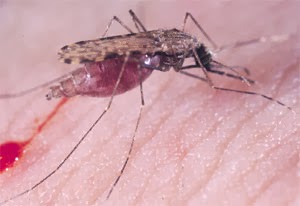| Online: | |
| Visits: | |
| Stories: |

| Story Views | |
| Now: | |
| Last Hour: | |
| Last 24 Hours: | |
| Total: | |
Natural GMOs Part 191. Homing in on the mosquito
More @ Homing in on the mosquito:
See also:
More information: Nina Alphey and Michael B. Bonsall. “Interplay of population genetics and dynamics in the genetic control of mosquitoes.” J. R. Soc. Interface April 6, 2014 11 93 20131071; DOI: 10.1098/rsif.2013.1071 1742-5662
Movement of genes
http://phys.org/news/2013-11-malaria-mosquito-groups-surprisingly.html#inlRlv
 |
| The study found that the African malaria mosquito Anopheles gambiae has significant exchange of genes between the two groups. Credit: Anthony “Anton” Cornel/UC Davis |
(Phys.org) —A new study by researchers at the University of California, Davis, and in Mali finds that many of the assumptions underlying current thinking about the genetics of two key subgroups of malaria mosquitoes are false.
For the past decade, scientists around the world have intensely studied the two forms of the African malaria mosquito, Anopheles gambiae. It was thought that the mosquitoes in the two subgroups—known as the M and S forms—rarely mated outside of their groups, and, just this year, the two were recognized as distinct species.
The new study shows, however, that although the M and S subgroups have developed distinct genetic profiles, there actually continues to be significant exchange of genes between the two groups due to crossbreeding. These findings appear online in the Nov. 19 Early Edition of the Proceedings of the National Academy of Sciences.
Developing an accurate picture of gene flow through matings within and between these two mosquito groups could prove key to preventing the spread of malaria. The deadly mosquito-transmitted disease annually kills more than 660,000 people around the world, mostly in Africa.
In this study, lead authors Gregory Lanzaro and Yoosook Lee, both medical entomologists in the UC Davis School of Veterinary Medicine, and their colleagues showed that hybridization, or mating, between the M and S groups was far higher than previously assumed.
“It is critical that we understand the movement of genes between these two forms of the African malaria mosquito,” Lanzaro said….
Source: http://gmopundit.blogspot.com/2014/02/natural-gmos-part-191-homing-in-on.html



